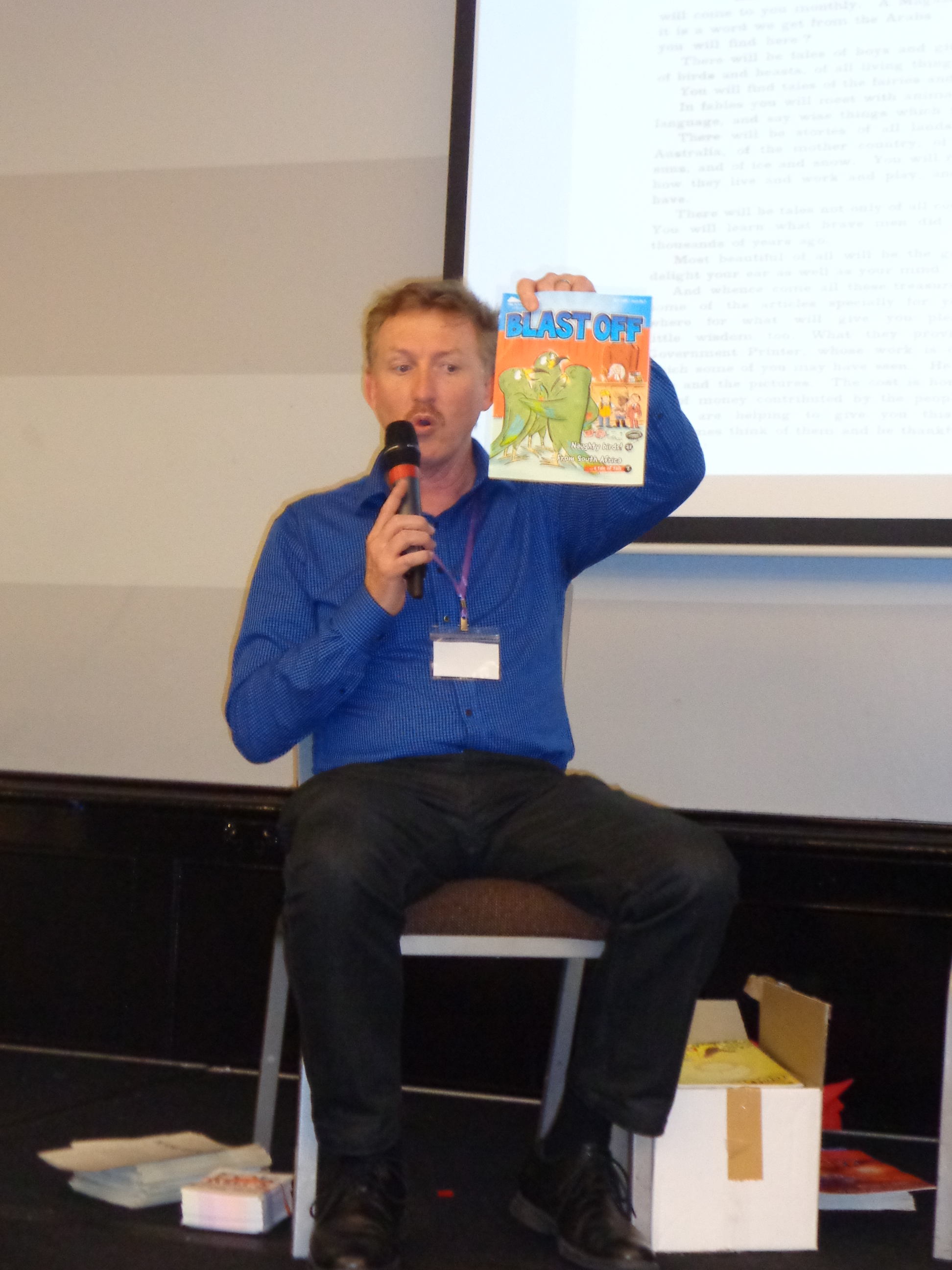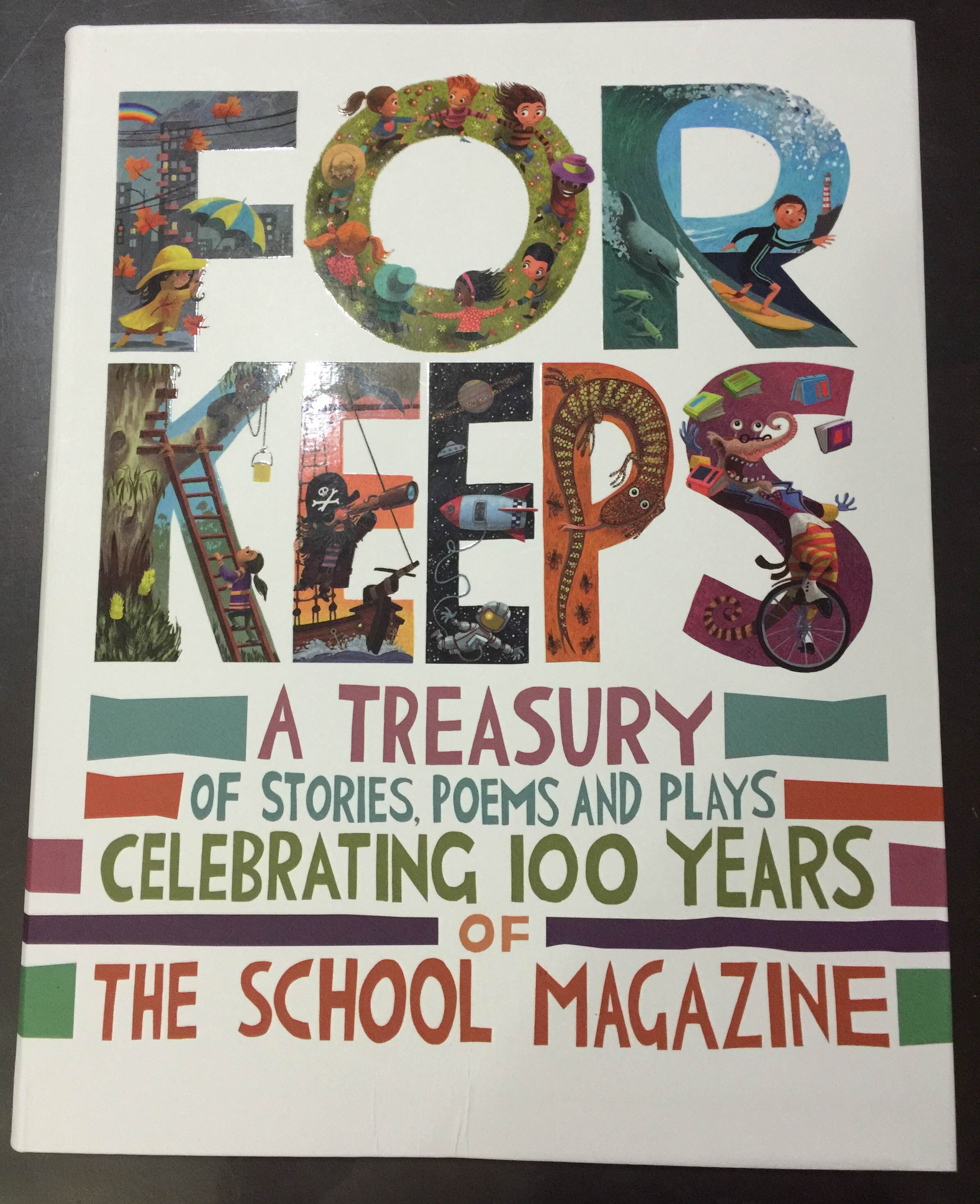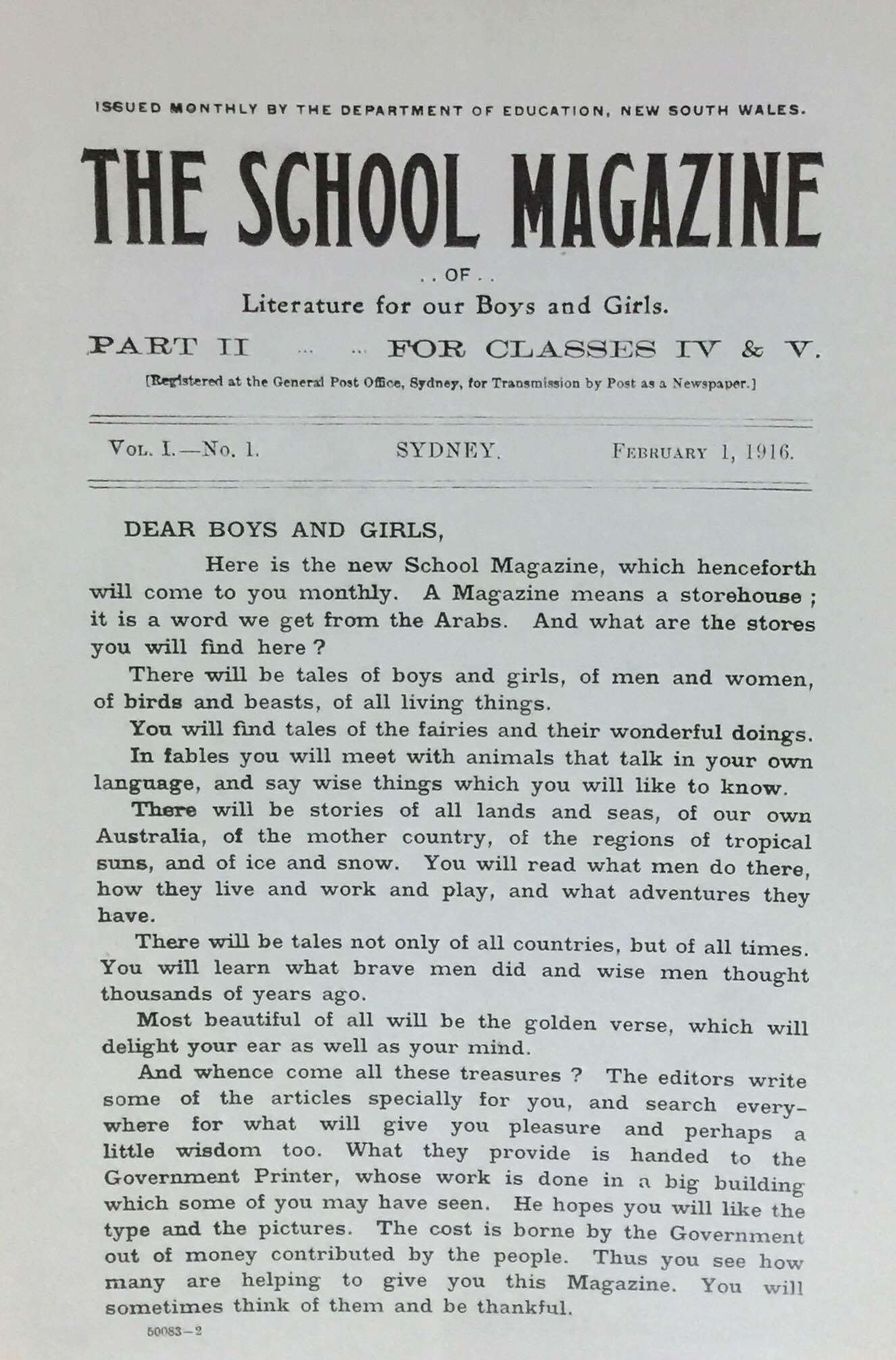The panel
A Centenary of School Magazine with (Editor) Alan Edwards, (Contributors) Sheryl Gwyther, Marjorie Crosby-Fairall and Wendy Fitzgerald and (Graphic Designer) Josemalene Ruaya.
This year marks the 100th anniversary of The School Magazine, which began publication in 1916 and is now the longest running children’s literary publication in the world. To commemorate this momentous occasion SCBWI included a panel discussion about the School Magazine and their publication process, as a part of the 2016 Conference. Chaired by Sheryl Gwyther, author and prolific contributor for the magazine, the panel provided an interesting and informative overview of the magazine’s process and it’s glorious 100-year history.
For those who don’t know, The School Magazine is Australia’s foremost literary magazine for children, filled with texts of literary merit that encourage children to read for pleasure and explore stories. Editor Alan Edwards says “we are trying to instill a love of reading in our young students and I think we have done a pretty good job of that over the last century”.
In honor of their birthday The School Magazine has recently released “For Keeps” An anthology of stories, poems and plays from the last century of publications. It is a visual and literary feast for adults and children alike. I spoke with designer, Wendy Rapee, about her choices in putting together this gorgeous treasury.
“It was with a sense of nostalgia I approached this task, so the palette is soft and slightly dusty. Right from the start I wanted to contextualise the pieces for kids of today as well as evoking nostalgia for past readers."
The School Magazine publishes 4 different magazines aimed at children in years 3, 4, 5 and 6 at school.
- Countdown (year 3)
- Blast Off (year 4)
- Orbit (year 5)
- Touch Down (year 6)
They produce 40 magazines a year along with 40 teaching guides, with each issue lovingly assembled by a hardworking and dedicated team including panelists Alan Edwards and Josemalene Ruaya.
Jose is The School Magazine’s only graphic designer, single handedly responsible for the look and layout of 40 publications per year. Jose gave a fascinating breakdown of her design process and philosophy for the magazine saying
“I tend to design to make our pieces inviting to read and to make sure that the layout and the illustrations and graphics support and enrich the text rather than overwhelm it…we use illustration in many different ways. We always try to add something else that there isn’t space for in the text, we always try to support what’s going on in the text and add value to what’s already there”
The School Magazine has had the input of some of Australia's most prominent children's writers and illustrators throughout their 100-year existence, including but certainly not limited to, Aaron Blabey, Sarah Davis, Duncan Ball, Patricia Wrightson and Ursula Dubosarsky and panelists, Sheryl Gwyther and Wendy Fitzgerald.
Wendy Fitzgerald discussing her latest contribution
As a matter of fact Neridah McMullin’s new picture book “Fabish” came from a story originally published in “Blast Off “Magazine in 2011. The School Magazine has a reputation for inspiring books and launching careers.
But anyone involved in the world of children’s books and primary education already knows this, what made the SCBWI session stand out from all the other celebrations this year, was the way it detailed The School Magazine’s process from submission to publication. Providing a real insight for writers and illustrators about submitting their work and what to expect when they do.
A couple of interesting facts;
- The School Magazine is one of the last publications in Australia that accepts unsolicited manuscripts.
- It is also one of the last places that will publish poetry now, making it’s existence even more important on the literary stage for writers and readers alike.
So if anyone is interested in submitting to the School Magazine and wants to know what happens once you do, the process is pretty simple.
For writers:
- The School Magazine accepts prose, stories, plays, poetry and fiction.
- When a manuscript comes in the assessment process usually takes about 4 months and it is read by 3 or 4 different people, before having a decision made on whether it will be accepted or not.
- Once a submission has been accepted the magazine contacts the author, purchases the piece AND pays them straight away!
"Choice is driven by the quality of the writing." Alan Edwards on the submission decision process
How to submit to The School Magazine
Just another great advantage for contributors to The School Magazine, they pay upon purchase and their purchase is for single use only. So if they want to use your work again, you get paid again, at a reduced rate. Once the piece has been purchased they will wait for the right issue to come up before placing it. Generally you will know when it’s time because a copy of The School Magazine arrives, like a present, in your mailbox.
"Everything we do must add value to the text" Josemalene Ruaya on magazine design
For Illustrators,:
- The School Magazine provides a rotating cycle of opportunity by having a pool of illustrators it draws upon year round, choosing the illustrator that best suits the written work.
- Submissions are open for certain periods of time each year, usually June to July but this can change, so it ‘s best to keep an eye on the website.
- Just like with written work, illustrators also retain their rights and purchase is for a single use only.
"Illuminate not decorate" Marjorie Crosby-Fairall on her illustrative briefs
Marjorie Crosby-Fairall discussing the magazine's illustrative briefs
Throughout this panel one point became abundantly clear, EVERYONE has nothing but reverence and deep respect for The School Magazine. The people who work to bring it to life, are deeply impassioned individuals who strive to expose our kids to quality literature. To be accepted as a contributor is an honor, a validation of literary merit and something people own with great pride. So why not try submitting your work and see where The School Magazine could take you too…
Kel Butler Roving Reporter
#SCBWISyd













